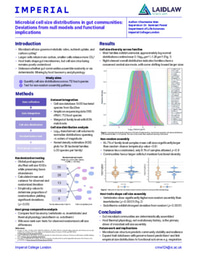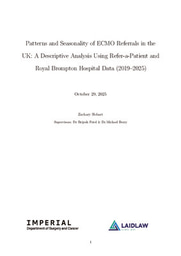Project outline: CAR-ATM to combat obesity
Obesity and its impacts
Obesity is a growing global health crisis, defined by a BMI ≥30. Since 1990, obesity rates have doubled in adults and quadrupled in children. No longer limited to wealthy nations, it now affects low- and middle-income countries at alarming rates. Obesity is a chronic, multifactorial disease driven by energy imbalance—caloric intake exceeding expenditure—leading to excess fat storage and metabolic dysfunction.
Adipose tissue (AT), once viewed as passive fat storage, is now recognized as an active endocrine organ. It regulates energy balance, appetite, insulin sensitivity, and inflammation. In obesity, AT becomes dysfunctional, particularly due to hypertrophic expansion, fibrosis, and immune cell infiltration. This causes chronic low-grade inflammation and increases the risk for type 2 diabetes, cardiovascular disease, certain cancers, liver disease, and premature mortality.
Types and roles of adipose tissue (AT)
AT is classified into three types:
- White adipose tissue (WAT): Stores energy and regulates endocrine function.
- Brown adipose tissue (BAT): Burns energy for thermogenesis via UCP1.
- Beige (brite) adipocytes: Inducible thermogenic cells within WAT, capable of browning under cold or β-adrenergic stimuli.
BAT and beige fat promote energy expenditure, whereas excess WAT—especially visceral WAT (vWAT)—is linked to insulin resistance and inflammation. vWAT is more metabolically active and pro-inflammatory than subcutaneous WAT (sWAT), releasing fatty acids and cytokines directly to the liver, compounding metabolic risk.
AT expansion and dysfunction
AT expands via hypertrophy (cell enlargement) or hyperplasia (new cell formation). While hyperplasia promotes healthier adipocyte function, obesity skews expansion toward hypertrophy, especially in vWAT. This leads to inflammation, insulin resistance, and ectopic lipid deposition.
Adipogenesis (formation of new adipocytes) involves adipose progenitor cells (APCs). Recent studies highlight two APC fates: differentiating into adipocytes or becoming non-adipogenic structural WNT-regulated (SWAT) cells. Obesity impairs SWAT maintenance, diminishing AT plasticity. Promoting controlled hyperplasia over hypertrophy may improve metabolic health.
TGF-β signaling in obesity
The TGF-β superfamily regulates adipogenesis, fibrosis, and inflammation. TGF-β/Smad3 signaling inhibits adipocyte browning and promotes fibrosis and inflammation. Mouse models lacking Smad3 are protected from obesity and show increased WAT browning, mitochondrial activity, and insulin sensitivity.
Conversely, BMP signaling—another TGF-β superfamily branch—promotes adipocyte differentiation and metabolic function. The balance between pro- and anti-adipogenic signals within AT determines whether progenitor cells differentiate or fibrotically transform. TGF-β also induces extracellular matrix (ECM) accumulation and fibrosis in AT, impairing nutrient diffusion and promoting inflammation.
Role of Adipose Tissue Macrophages (ATMs)
Macrophages in AT shift from anti-inflammatory M2 phenotypes in lean individuals to pro-inflammatory M1 states in obesity. These cells respond to hypertrophy-induced stressors like hypoxia, free fatty acids (FFAs), and adipocyte necrosis, forming crown-like structures around dying cells.
Monocyte chemoattractant protein-1 (MCP-1) and leptin recruit monocytes, amplifying inflammation. ATMs not only sustain inflammation but also hinder insulin signaling. New findings suggest more nuanced phenotypes like metabolically activated macrophages (MMe), reflecting the complexity of ATM function in obesity.
CAR-ATM immunotherapy for obesity
Inspired by cancer immunotherapy, chimeric antigen receptor (CAR) macrophages offer a new avenue for obesity treatment. CAR-T cells are effective in hematologic cancers but limited against solid tumors due to immune suppression and poor infiltration. CAR-macrophages (CAR-M) overcome these by degrading tumor ECM, promoting T cell recruitment, and directly phagocytosing tumor cells.
Applying this to obesity, CAR-adipose tissue macrophages (CAR-ATMs) are proposed as a novel therapy. These engineered macrophages would:
- Recognize adipocyte-specific surface markers
- Inhibit TGF-β signaling via antibody secretion
- Promote adipocyte browning and smaller cell size
- Prevent hypertrophic expansion and associated inflammation
Experimental approach
The project involves:
- Identifying adipocyte-specific surface markers via scRNAseq, proteomics, and IHC.
- Designing CAR constructs with non-phagocytic signaling domains (e.g., IL-10, PPARγ, or dominant-negative Smad3) to reprogram, not destroy, adipocytes.
- Engineering ATMs using lentiviral vectors and validating CAR expression via qPCR, flow cytometry, and functional assays.
- Testing functionality through adipocyte size, mitochondrial activity, lipolysis, and TGF-β inhibition assays.
Potential and challenges
This dual-action approach addresses both adipocyte accumulation and inflammation. Unlike current anti-obesity drugs, CAR-ATMs act locally in WAT, avoiding systemic side effects and promoting long-term metabolic health. This therapy could also be adapted for related diseases like type 2 diabetes and NAFLD.
Challenges include:
- Accurately identifying adipocyte-specific markers
- Achieving selective targeting of vWAT without off-target effects
- Ensuring stable CAR expression in macrophages
- Overcoming ECM barriers in obese AT
Conclusion
CAR-ATM therapy represents a paradigm shift in obesity treatment. By modulating AT at the cellular level, it offers a precision-based, immune-engineered solution for obesity and its complications. This research bridges immunotherapy and metabolic disease, with the potential to redefine how we address chronic obesity at its root.





Please sign in
If you are a registered user on Laidlaw Scholars Network, please sign in